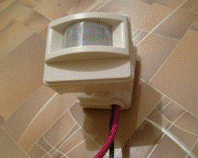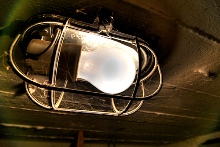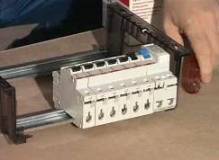Don't put off what you can do today

“The thunder will not strike - the man will not cross himself”, “Do not put off until tomorrow what you can do today”, “Forge the iron while it's hot” - these are well-known folk wisdom.
For centuries, people have felt the truth of these expressions on their own skin, regardless of what they were doing - they ate a mammoth in a cave or chopped cabbage at a flea market, planted rye in the steppes of Ukraine or gathered votes in elections ...
In addition to applying these proverbs to certain events, the meaning implied in them can be transferred to entire periods in a person’s life.
He postponed his studies, "put" to work - and the years go by, and the person’s self-realization does not occur. As a result, negative consequences are not ruled out - “looked into the glass”, “stepped on a cork” or simply missed the time, which is not enough, how not to hope, then when the “cancer whistles” or “the cock bites” ...
How to connect the motion sensor to control the light
 The first association that comes to mind with the phrase “smart home” is the automatic inclusion of light in a room when a person appears there and the automatic lighting off when people exit this room. In this article I will give detailed instructions on how to create such an automatic inclusion of light with your own hands, making your home a little smarter.
The first association that comes to mind with the phrase “smart home” is the automatic inclusion of light in a room when a person appears there and the automatic lighting off when people exit this room. In this article I will give detailed instructions on how to create such an automatic inclusion of light with your own hands, making your home a little smarter.
To implement this idea, the LX-01 motion sensor was taken. The principle of its action is simple - when there is movement in the detection zone, it closes the circuit, thereby including devices connected to it. In the absence of movement, the circuit automatically opens, turning off all devices.
The motion sensor also has the ability to configure, there are three of them - the time interval for switching off, the level of illumination and sensitivity. The time interval for shutdown sets the time during which the sensor will work since the last motion detection. Values are set between 5 seconds and approximately 2 minutes ...
How to make a do-it-yourself indicator of connecting electrical appliances to a 220V network
 Indication device allows you to monitor when leaving home: are electrical appliances disconnected from the network? If any load with a power> 8 W remains on, then both LEDs HL1 and HL2 light up (see figure). The brightness of the glow is small at a load of 8 watts (a dot in the LED is on), therefore, in bright light, to see the glow, you need to cover with your palm the penetration of bright light on the LED. LED (s) are installed at the front door. Conductors to them (0.2 mm) are laid under the wallpaper (due to the small current passing through them). LED HL2 can be excluded from the circuit, and if it remains, then HL1 can be installed on the inside of the door, and HL2 - on the outside.
Indication device allows you to monitor when leaving home: are electrical appliances disconnected from the network? If any load with a power> 8 W remains on, then both LEDs HL1 and HL2 light up (see figure). The brightness of the glow is small at a load of 8 watts (a dot in the LED is on), therefore, in bright light, to see the glow, you need to cover with your palm the penetration of bright light on the LED. LED (s) are installed at the front door. Conductors to them (0.2 mm) are laid under the wallpaper (due to the small current passing through them). LED HL2 can be excluded from the circuit, and if it remains, then HL1 can be installed on the inside of the door, and HL2 - on the outside.
As a T1 transformer, ready-made ones are used, which have a winding with a large number of turns (2000-3000, or maybe less) and it is possible to wind 8 to 10 turns of a mounting wire of sufficient cross-section. In each particular transformer, the number of turns is selected experimentally. These 8 - 10 turns will be the primary winding of the transformer, and the secondary - those that are in the finished transformer ...
About electrical protection devices for "dummies": residual current device (RCD)
 Imagine the following - a washing machine is installed in your bathroom. Whatever the well-known brand, devices of any manufacturer are subject to breakdown, and, say, the most banal thing happens - the insulation on the power cord is damaged and the network potential is on the machine body. And this is not even a breakdown, the car continues to work, but it is already becoming a source of increased danger. After all, if we touch both the car body and the water pipe at the same time, we will close the electric circuit through ourselves.And in most cases it will be fatal.
Imagine the following - a washing machine is installed in your bathroom. Whatever the well-known brand, devices of any manufacturer are subject to breakdown, and, say, the most banal thing happens - the insulation on the power cord is damaged and the network potential is on the machine body. And this is not even a breakdown, the car continues to work, but it is already becoming a source of increased danger. After all, if we touch both the car body and the water pipe at the same time, we will close the electric circuit through ourselves.And in most cases it will be fatal.
To avoid these terrible consequences, RCDs were invented - protective shutdown devices.
An UZO is a high-speed protective switch that responds to differential current in conductors that supply electricity to the protected electrical installation - this is the "official" definition. In a more understandable language, the device will disconnect the consumer from the mains supply if a current leakage occurs to the PE (ground) conductor. Let's consider the principle of operation of the RCD ...
How to make a simple status indicator of a remote lamp
 At one time, I was faced with the need to control the burning and integrity of the light bulb when the switch is in another room (for example, a basement, cellar or chicken coop). More than once it happened, the switch is turned on, and the light does not light up: it either burned out, or the contact in the cartridge or switch disappeared. In this case, the switch is located in the corridor, and to the basement, where hens live, you need to go around the house. It is especially bad when, because of this, the bird does not enter the basement in the evening, and then it must be entered manually. The problem was solved by installing a simple and trouble-free device that indicates the flow of current in the circuit of the lighting lamp and is located near the switch.
At one time, I was faced with the need to control the burning and integrity of the light bulb when the switch is in another room (for example, a basement, cellar or chicken coop). More than once it happened, the switch is turned on, and the light does not light up: it either burned out, or the contact in the cartridge or switch disappeared. In this case, the switch is located in the corridor, and to the basement, where hens live, you need to go around the house. It is especially bad when, because of this, the bird does not enter the basement in the evening, and then it must be entered manually. The problem was solved by installing a simple and trouble-free device that indicates the flow of current in the circuit of the lighting lamp and is located near the switch.
The indicator diagram is shown in the figure. When current flows through ballast diodes, a voltage sufficient for the LED to glow is incident on them. You can connect the device at any convenient point in the electrical circuit (before or after the switch) or to break the second wire leading to the lamp.
The indicator is not critical to details. As ballast diodes, you can use any small-sized diodes with an allowable direct current not lower than the current consumption of the illuminator and any operating voltage ...
About electrical protection devices for dummies: circuit breakers
 Many people remember Soviet circuit breakers - plugs. Instead of ordinary ceramic plugs, they were screwed into the shield of an electric meter. It was a compromise solution, which, in general, paid off. Indeed, thanks to this, plugs became "reusable", and without changing the existing design of the electrical panel. In general, the inventor of automatic protection devices is ABB, which patented a small-sized circuit breaker in 1923. Much time has passed since then, but the principle of operation of the circuit breaker has remained unchanged - the restoration of its normal operation with one movement of the hand.
Many people remember Soviet circuit breakers - plugs. Instead of ordinary ceramic plugs, they were screwed into the shield of an electric meter. It was a compromise solution, which, in general, paid off. Indeed, thanks to this, plugs became "reusable", and without changing the existing design of the electrical panel. In general, the inventor of automatic protection devices is ABB, which patented a small-sized circuit breaker in 1923. Much time has passed since then, but the principle of operation of the circuit breaker has remained unchanged - the restoration of its normal operation with one movement of the hand.
A circuit breaker is a switching electrical apparatus designed to conduct current in normal conditions and to automatically turn off electrical installations when short-circuit currents and overloads occur. The most common and popular today are circuit breakers that are mounted on a 35 mm DIN rail in a distribution panel.
The main parameter of circuit breakers is the rated current. This is a current whose value in a particular circuit is considered normal, i.e. for which electrical equipment is designed. For electrical installations in residential buildings, the rated current ...
What you need to know when installing an RCD and grounding device in an apartment or private house
 It is not necessary to use RCDs or electronically controlled difavtomats, for example, IEK AD 12, IEK AD 14 diflavtomats, when the phase or neutral conductor breaks, the power of the electronic control circuit is de-energized and the differential protection stops working. There is a diffrel with an electronic control circuit in which, in the event of a power failure, the consumer shuts down in the likeness of a starter. To connect the consumer after resuming power, you must manually turn on this type of diffrel.This type of differential switch can be used to power electrical appliances where it is dangerous to re-supply voltage after a power failure.
It is not necessary to use RCDs or electronically controlled difavtomats, for example, IEK AD 12, IEK AD 14 diflavtomats, when the phase or neutral conductor breaks, the power of the electronic control circuit is de-energized and the differential protection stops working. There is a diffrel with an electronic control circuit in which, in the event of a power failure, the consumer shuts down in the likeness of a starter. To connect the consumer after resuming power, you must manually turn on this type of diffrel.This type of differential switch can be used to power electrical appliances where it is dangerous to re-supply voltage after a power failure.
With improperly made grounding can be more dangerous than without grounding !!!
Grounding without an RCD or grounding is prohibited !!!
Do not connect the ground terminals of outlets and electrical appliances protected only by circuit breakers that protect only wiring from short circuits in the phase-neutral and phase-phase circuits, to natural, artificial and especially home-made grounding. You expose yourself and others to mortal danger. Automata are triggered only by currents many times higher than the nominal value of the automaton. Natural, artificial and especially home-made grounding in the vast majority of cases has a resistance that cannot create such currents and, accordingly, carry out a protective shutdown of automatic machines within 0.4 seconds normalized by safety ...
 Some models of bells or bells have batteries inside the case, others have built-in transformers that reduce the mains voltage of 220 V (or 230 V) to small values necessary for this type of electrical appliance. In many models, both power methods can be used. Most of them use two or four batteries with a voltage of 1.5 V, and some use one battery with a voltage of 4.5 V.
Some models of bells or bells have batteries inside the case, others have built-in transformers that reduce the mains voltage of 220 V (or 230 V) to small values necessary for this type of electrical appliance. In many models, both power methods can be used. Most of them use two or four batteries with a voltage of 1.5 V, and some use one battery with a voltage of 4.5 V.
Commercially available transformers for doorbell circuitry typically have three pairs of 3, 5, and 8 V pins (contacts) that can be used in various types of bells. As a rule, 3 and 5 V are used in calls and buzzer, and 8 V is suitable for many variants of bells.
However, some bell models require a higher voltage, and they need transformers with 4, 8, and 12 V outputs. The bell transformer must be designed so that the mains voltage cannot reach the low voltage windings.
Batteries, buttons and bells are connected by a two-core insulated “bell wire”. This thin wire is usually laid on the surface and fastened with small piercing brackets. The bell wire also connects the bell and button to a transformer.
Connect the double-insulated bell transformer to the junction box or ceiling socket of the lighting circuit with a rigid wire with two ...
